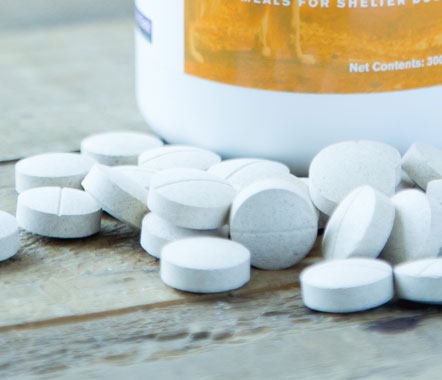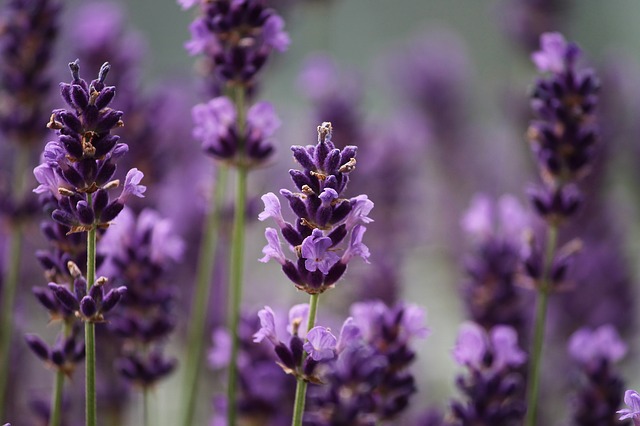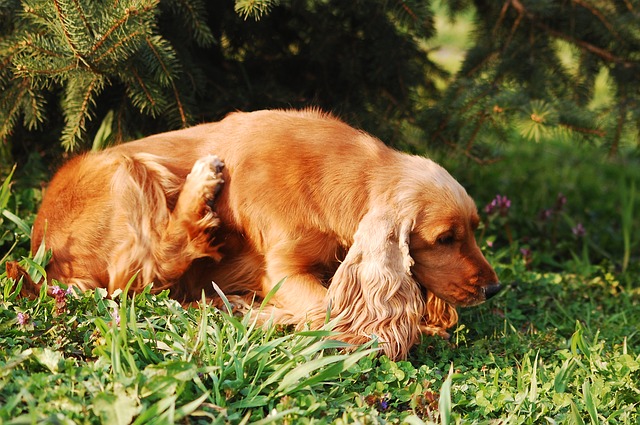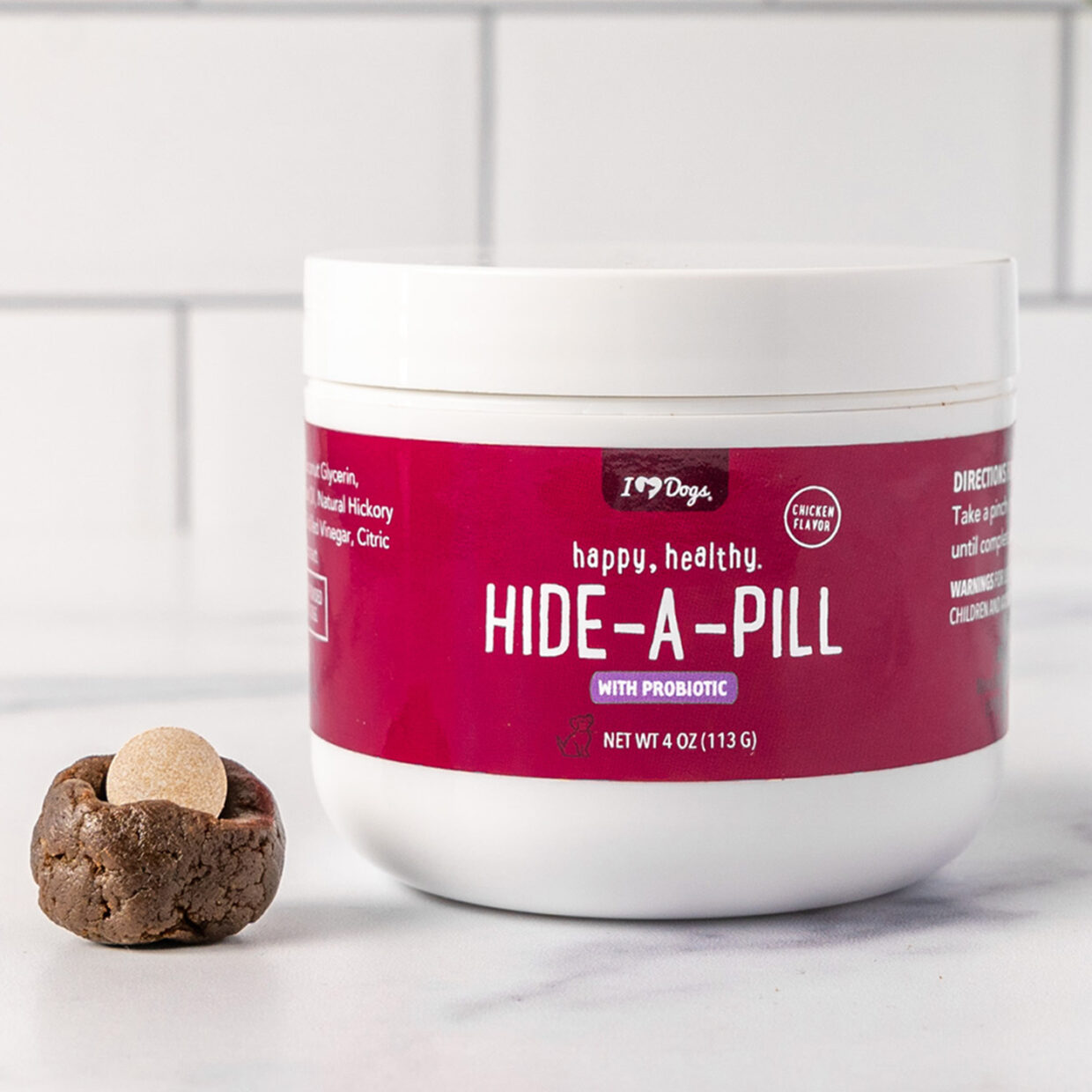You definitely don’t want your dog and your home to be infested with fleas, but you might be a little concerned about using the hardcore chemicals and pesticides found in traditional flea repellents, whether they’re topical or ingested. Luckily, you don’t have to choose between using chemicals or not protecting your dog. There are lots of natural ingredients that can help repel fleas without exposing your dog to chemicals and pesticides.

But first, if you live in a climate with cold winters, the better news is that you may not need to worry about flea control during the winter. Heat and humidity make the perfect breeding conditions for fleas, so they are much more prevalent in warmer months and locations than colder ones. While it’s not impossible that your dog could catch fleas in the winter, you may be able to simply remove the occasional flea with a flea comb without worrying about daily repellent control.
Apart from the “ick factor” of fleas, they also carry many diseases that can affect your dog, you, and your family. That’s why it’s so important to be vigilant about flea control, no matter what method you use. Common diseases spread by fleas in the United States include Murine Typhus, tapeworms, tularemia, and Bubonic plague – the same plague, known then as “Black Death,” that wiped out half the population of Europe in the 14th century. While Bubonic plague can now be treated with antibiotics, it’s still not something you want to deal with.

With that being said, here are 11 examples of natural ingredients that help keep fleas away.
#1 – Apple cider vinegar
Fleas prefer an alkaline environment, so making your dog’s skin and coat more acidic with topical application of apple cider vinegar and balancing out the alkaline environment inside your dog by adding raw unfiltered apple cider vinegar (ACV) to their water bowl can both help repel fleas. Add up to two teaspoons of apple cider vinegar to your dog’s water bowl (less if he refuses to drink it that concentrated) to balance his alkalinity from the inside. Mix a combination of half apple cider vinegar and half water in a spray bottle to apply it topically, making sure to avoid spraying it into his eyes, ears, nose, genitals, or any open wounds. You can spray your dog up to twice a day to repel fleas.

#2 – Rosemary
You can make a chemical-free flea dip by boiling two cups of fresh rosemary for 30 minutes. Strain out the leaves and add up to a gallon of warm water. Pour the mixture over your dog and let it air dry. Optionally, you can add a lemon, one sprig of garden sage, and one sprig of lavender for a great-smelling spray that has extra flea-repelling properties.
#3 – Garlic

We all know how strong and pungent garlic can be. Fortunately, just a little garlic goes a long way for our dogs and helps keep pesty critters at bay. Our favorite hack is using these inexpensive & effective garlic tablets which cost pennies a day. They also include another ingredient on this list, brewer’s yeast.
But wait, isn’t garlic bad for dogs? You may have heard garlic listed as an ingredient that is toxic to dogs. Fortunately, your dog would have to eat A LOT of garlic in order to cause an issue. The amount contained in most garlic supplements is enough to ward off fleas, but cause no problems for our furry friends.
#4 – Diatomaceous Earth
Food grade diatomaceous earth (DE) can be sprinkled on your dog and around your yard to help dry out flea eggs before they have a chance to hatch. DE is a non-toxic powder made from fossilized organisms called diatoms. Be sure to avoid industrial strength DE since it’s chemically treated and used for pools and manufacturing.
#5 – Citronella
You’ve probably used citronella candles or other products around your home to ward off mosquitos. Did you know it’s effective against fleas and safe for dogs, as well? Citronella oil is best used in sprays with other ingredients. Try this recipe for a flea-repelling spray that can be used on your dog and around your home: Combine one gallon of hot water with 20 drops of citronella oil, 10 drops of tea tree oil, 10 drops of lemongrass oil, and 5 drops of geranium oil. Add this mixture to a spray bottle and spray your dog once a day, letting the spray dry naturally.
#6 – Lavender oil
One study showed that diluted lavender, at rates of 10 to 20 percent lavender, was just as effective at repelling fleas as flea and tick sprays containing DEET. A few drops of lavender oil added to a homemade flea spray smells great and is an effective flea repellent.

#7 – Cedarwood oil
There are many essential oils that can be diluted with a carrier oil like grapeseed oil or fractionated coconut oil at a ratio of one drop of essential oil to one milliliter of carrier oil. The resulting mixture can be applied to a bandana tied around your dog’s neck. Cedarwood oil is one oil that works well like this.
#8 – Peppermint oil
Peppermint oil can be diluted like the cedarwood oil and applied to a bandana.
#10 – Brewer’s Yeast
Brewer’s yeast is an effective and safe natural supplement that helps ward of fleas. Brewer’s yeast also contains a plentiful amount of B vitamins that offer a multitude of benefits to your dog’s skin and coat. It’s also an ingredient contained in the inexpensive chew tablets we mentioned above.

#10 – Lemongrass oil*
This is best used in combination with other ingredients in flea sprays.
#11 – Geranium oil
Geranium oil is an important ingredient in the citronella flea repellent spray.

Looking for all-natural flea relief? Check out our Project Paws of Flea & Tick Repellent products!
Each one provides meals for shelter dogs in need, too.
(H/T: Mother Nature Network, Dogs Naturally Magazine, eHomeRemedies, Pets and Parasites, PetMD, JC Ehrlich Pest Control)
These statements have not been evaluated by the Food and Drug Administration. This product is not intended to diagnose, treat, cure, or prevent any disease. The information on this website is not intended to replace a one-on-one relationship with a qualified healthcare professional.

